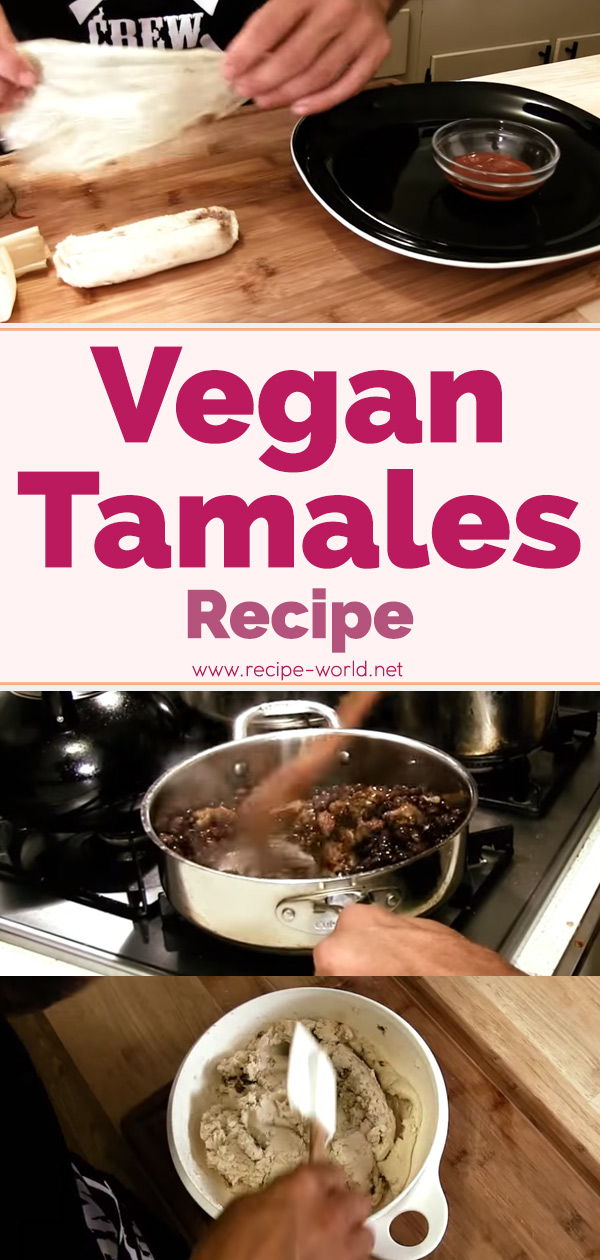A tamale is a dish made of masa or a cornmeal-based dough wrapped in a corn husk or banana leaf, then steamed. It can be a sweet or savory dish filled with meats, poultry, fish, seafood, vegetables or fruits. The tamale’s history traces back to the Aztec and Mayan civilizations in 7000 BC. It was an essential portable food for warriors, hunters, and travelers. This popular Mexican food is originally a Mesoamerican dish that has spanned the world. In the Philippines, a savory version of the tamale called binaki is made of a rice flour dough filled with chicken, ham, shrimps, eggs, and vegetables.
This vegan tamales recipe uses corn flour seasoned with salt, coconut, nectar, and chili powder for the perfectly flavored soft masa and a blended mixture of sautéed black beans, soy protein-based meat substitute, and aromatics for the delicious and nutritious filling. Everyone can enjoy these vegan tamales as a snack or a meal on the go.
Ingredients:
This recipe takes about 90 minutes to make. The corn husks need to soak in hot water for 90 minutes. Serves 15 tamales.
• 15 dried corn husks
Bean Filling:
• 1 tbsp olive oil
• ½ cup of diced onion
• 6 garlic cloves, smashed
• 1 ½ tsp chili powder
• ¾ cup of crumbled LightlifeGimme Lean Beef
• 2 cups of cooked black beans
• 1 tsp salt
• ½ tsp pepper
• 1 tbsp apple cider vinegar
Masa:
• 3 ¼ cups of corn flour
• 3 cups of water
• ½ cup of canola oil
• ½ tsp baking powder
• 1 tsp sea salt
• 1 tbsp coconut nectar
• 1 tbsp chili powder
Instructions:
To make the bean filling, heat olive oil in a pan over medium heat.
Add onions, garlic, and chili powder and sauté for 2 to 3 minutes.
Add crumbled Gimme Lean Beef and continue sautéing for 1 minute.
Stir in cooked black beans, salt, pepper, and apple cider vinegar.
Cook the meat mixture for 5 minutes, then turn off the heat.
Let the bean filling cool while you prepare the corn dough.
To make the masa, put corn flour, water, oil, baking powder, salt, coconut nectar, and chili powder in a large mixing bowl.
Using a spatula or wooden spoon, mix the ingredient until well combined.
With clean hands, mix until you form a smooth dough, then form into golf ball-sized pieces.
Put the cooled bean filling in a blender or food processor and blend until smooth.
Lay the corn husk on a flat surface, then put the dough ball in the center.
Flatten the dough leaving enough space on the sides of the corn husk.
Put about 2 tbsp of bean filling in the center of the corn dough.
Roll the corn husk making sure the dough covers the bean mixture.
Fold each side of the corn husk to the center to seal.
Continue filling and rolling the rest of the corn husks.
Steam the tamales for 1 hour.
Ideas And Tips:
You can also soak the corn husks in cold water overnight.
LightlifeGimme Lean Beefis made from textured soy protein. You can use other vegan meat alternatives like tofu, tempeh, seitan or mushrooms. You can also skip the meat alternative and just add 1/2 cup of cooked black beans to the filling mixture.
Instead of canola oil, you can use sunflower oil, safflower oil, coconut oil, corn oil or soybean oil.
Aside from corn husks, you can use banana leaves, grape leaves, turmeric leaves, Swiss chards, mustard greens, perilla leaves, taro leaves, iceberg lettuce, bok choy, cabbage, Romaine lettuce or collard greens.
You can substitute coconut nectar with agave nectar, maple syrup, molasses or brown rice syrup.

images – https://www.youtube.com/watch?v=B0YIRF-9_Lc
😳 What Tinnitus Does To Your Brain Cells (And How To Stop It)
After 47 years of studies and countless brain scans done on more than 2,400 tinnitus patients, scientists at the MIT Institute found that in a shocking 96% of cases, tinnitus was actually shrinking their brain cells.
As it turns out, tinnitus and brain health are strongly linked.
Even more interesting: The reason why top army officials are not deaf after decades of hearing machine guns, bombs going off and helicopter noises…
Is because they are using something called "the wire method", a simple protocol inspired by a classified surgery on deaf people from the 1950s...


